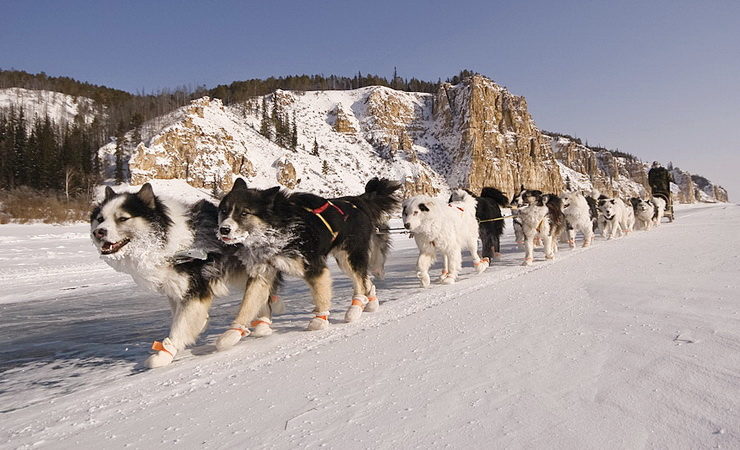Yakutian Laika (Yakut Laika) is a newly developed dog breed with an ancient history. It is a working breed that originates from the Yakutia region of Russian Siberia and can be used for sledding, hunting, reindeer herding, as well as a family pet.
![]()

This kind of Laikas is a close relative of the well-known East Siberian Laika and the world-popular Siberian Husky. (Photo Credit: Ajarvarlamov/Wiki)
The Yakutian Laika breed is a middle-sized hardy dog with a thick coat that is necessary for the hostile Arctic climate. This is a versatile dog with a strong hunting instinct, an excellent sense of smell, hearing, and vision. They are friendly to humans but can be aggressive to predators. They are also an active, playful, affectionate, and curious dog that is fast and elastic in its movements.
Since ancient times the ancestors of Yakutian Laikas were employed by native Yakut people as universal animals: they were used for hunting, they were used as draft animals, they were eaten, their pelts were used for making clothing, and for religious ceremonies. These dogs lived as primitive aboriginal breeds and mated free. They stayed outside throughout long cold winters hiding under snow and covering muzzles with tails.
The most important role that the Yakutian Laikas then started to play was in transportation. In this severe part of Siberia, there were no other animals suitable for this purpose, and it was also possible to get enough fish and other food to feed the dogs in winter. The Yakuts became the first known people on earth to use the sleds (Yakutian nartas) pulled by the dogs.
The survey of the Yakutian Laikas conducted in 1856 has totaled as many as 15 157 dogs in the Yakutia region but in the 20th century, these dogs have lost their utmost importance for the Yakut people. Consequently, by the beginning of the 1990s, the number of Yakutian Laikas has dropped to only 3-4 thousand.
The Yakutian Laika is not yet recognized by the world canine organization FCI, or by American or British kennel clubs. However, this new dog breed is becoming more popular not only in Russia but also outside its native country. (Photo Credit: Yras/Wiki)
Like other Laikas, this is an intelligent, easily trained, and obedient dog breed. Yakutian Laika is always full of energy, very playful, and inquisitive. This Russian dog is people-friendly, sociable, and not aggressive though she needs to have very good relations with her owner.
The future of the Yakutian Laika breed is now in the hands of private breeders who promote it worldwide at various dog shows, and the dogs are mostly owned as companions. There are people though who use the Yakutian Laikas for recreational sledding and hunting expeditions for game birds, seals, polar foxes, and even bears.
Males 53–56 centimeters (21–22 in)
Females 52–55 centimeters (20–22 in)
Breed Names
Yakutian Laika, Yakut Laika, Yakutskaya Laika, Russian: Якутская лайка
Say it in Russian:
Find a Russian dog name for your Yakutian Laika puppy!
Learn some Russian dog commands!
We use cookies to offer you a better browsing experience, analyze site traffic, personalize content and ads.